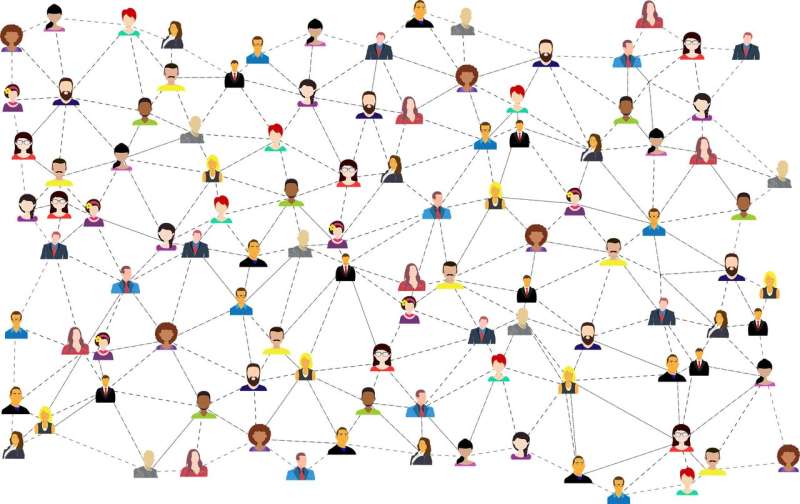Study explores how gossip spreads in social networks

How many different types of people—colleagues, friends, taxi drivers, etc.—should we hear a piece of information from before we start sharing it as a true fact?
Or, concerning marketing strategies, how many different types of people should recommend a service or a product before we buy it and begin recommending it ourselves?
Researchers studying the spread of infectious diseases and transmission of information have developed a model that elucidates the reasons why some news propagates through social networks before there is time to corroborate the facts. Their results, which may also help marketing companies target specific social groups, appear online at arXiv.org.
Laura P. Schaposnik, associate professor of mathematics at the University of Illinois at Chicago and corresponding author on the paper, wanted to show how one could advise people about believing gossip and when to transmit something heard from others.
In the paper, a model is presented to describe a way in which gossip propagates within a society if only certain trusted people transmitted it. Once an initial subset of a social network is randomly selected to carry a rumor, the gossip propagates to a new person, provided it is transmitted by a minimum threshold of people of different types.
"We show that if you require different types of people to tell you something before you start asserting it as a fact, then the propagation of the story will be much slower, and it will reach a much smaller proportion of the population than if we didn't require different types of people," Schaposnik said. "This multi-type bootstrap percolation has not been studied before. Gossips and rumors are not a new phenomenon, dating back to the birth of language, but we now know that the process can be somehow controlled by requiring some trust to be present."
As an example to understand the model's utility, the authors propose considering a society of 10,000 people. Each person is either a Democrat, Republican, independent or politically agnostic. If a person heard and believed gossip from any three people, regardless of type, then most often the gossip would quickly propagate to the whole social network.
"On the other hand, if one required a rumor to be heard from at least three different types of people before it could be spread, then the gossip would need to be initially believed by 250 people for it to spread to half the society or more," she said. "Hence, if one wanted to buy time for some piece of news to be corroborated whilst it is spreading through social networks, by requiring this higher trust level one could achieve this goal."
More information: A trust model for spreading gossip in social networks, arXiv:1905.11204 [physics.soc-ph] arxiv.org/abs/1905.11204
Provided by University of Illinois at Chicago


















